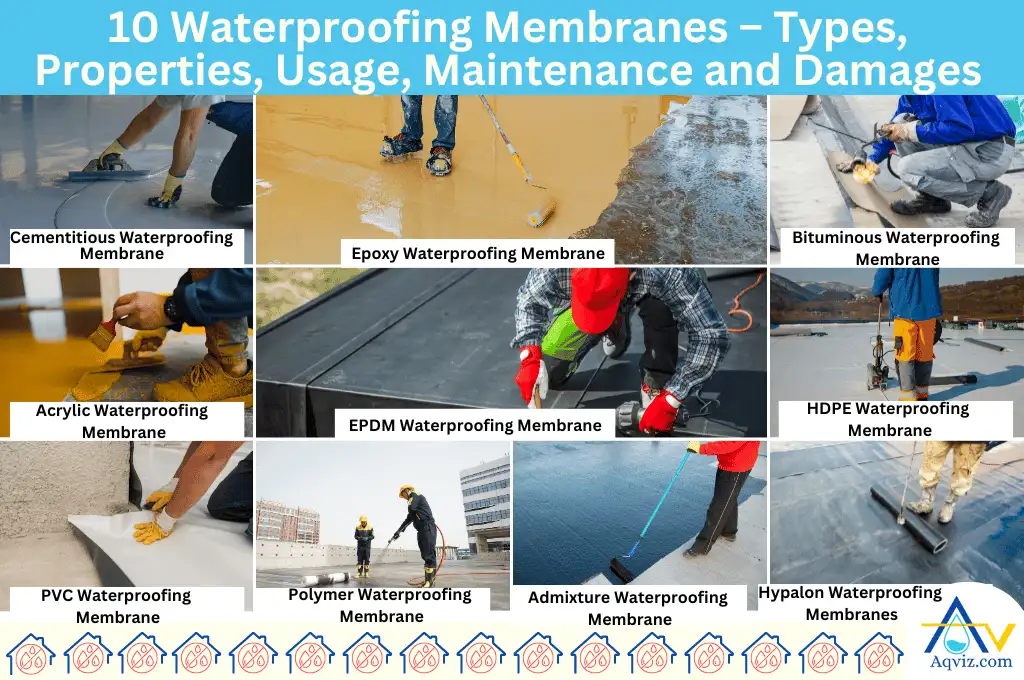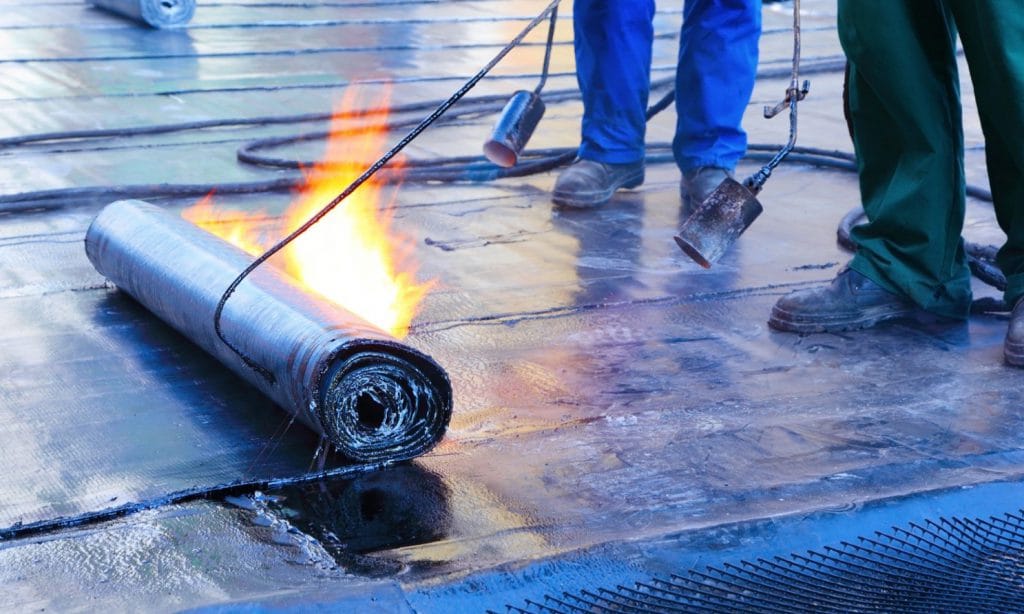Foundation waterproofing Omaha: Why It Matters
Wiki Article
Just How Waterproofing Works: A Detailed Take A Look At Techniques and Technologies
Waterproofing is essential for protecting structures from moisture-related damages. It entails different strategies and technologies that produce obstacles against water intrusion. Conventional methods, such as compressed clay, exist together with modern-day advancements like liquid-applied membrane layers. Recognizing the nuances of these techniques is crucial for efficient application. The performance of any waterproofing service hinges not just on the techniques used however likewise on recurring maintenance and examination. What are the vital aspects that affect long-lasting efficiency?Comprehending the Fundamentals of Waterproofing
Waterproofing is a vital procedure that safeguards structures from water invasion, which can lead to considerable damages with time. This method entails the application of various products and methods made to create an obstacle versus dampness. The main goal is to avoid water from penetrating surface areas, which can create degeneration, mold growth, and structural instability.Various factors affect the option of waterproofing technique, including the sort of framework, its location, and ecological conditions. Comprehending the physics of water movement and the homes of various materials is critical in picking an effective waterproofing solution.Effective waterproofing not only safeguards structures but additionally enhances their durability and integrity. Normally, it is integrated into the style phase of building and construction to ensure complete security. As recognition of water-related concerns grows, the significance of recognizing waterproofing principles comes to be significantly clear to designers, home builders, and homeowner alike.Conventional Waterproofing Techniques
Standard waterproofing techniques have actually been used for centuries, counting on reliable techniques and products to secure structures from water damage. Among the oldest methods involves the use of clay, which, when compacted, produces an all-natural barrier versus dampness. In addition, asphalt, a sticky, black product originated from oil, has actually been employed for its waterproof residential or commercial properties, commonly put on roof coverings and foundations.Another technique entails the application of lime-based plasters, which supply a breathable layer that enables dampness to leave while avoiding water access. Thatch roof covering, a typical approach still seen in some cultures, provides superb waterproofing due to its securely packed straw layers.Moreover, the use of stone and block has projected, as these products are inherently immune to water when effectively set up. On the whole, standard waterproofing methods highlight the importance of picking suitable materials and building methods to improve toughness against water intrusion.Modern Waterproofing Technologies
Developments in modern waterproofing innovations have changed the means structures are protected from water damage. Ingenious techniques such as liquid-applied membrane layers and advanced sealants have enhanced the performance and flexibility of waterproofing remedies. These innovations permit smooth application, decreasing the threat of leaks and making sure comprehensive insurance coverage over complex surfaces.Moreover, the assimilation of smart modern technologies, such as moisture sensors and automated surveillance systems, enables real-time evaluation of waterproofing performance. This positive strategy promotes prompt upkeep and minimizes lasting repair work costs.Additionally, advancements in spray-applied finishes use quick application and superb attachment, adapting to various substrates while providing robust security. Methods like polymer-modified systems additionally enhance flexibility and durability, making them ideal for varied settings. Generally, modern-day waterproofing technologies not just mitigate water invasion however additionally contribute to the long life and sustainability of frameworks, noting a significant shift in the industry.Materials Utilized in Waterproofing
The effectiveness of waterproofing remedies heavily relies on the materials made use of in their application. Various products are employed to develop barriers against water ingress, each with special homes suited for different environments. Commonly utilized materials include membranes, coatings, and sealants.Liquid-applied membranes, usually made from polyurethane or acrylic, form a seamless barrier that adjusts to complex surface areas. Sheet membranes, normally built from rubber or thermoplastic, offer resilience and are excellent for larger locations. Additionally, cementitious waterproofing materials, composed of cementitious substances, provide superb bond and flexibility.Sealants made from silicone or polyurethane are vital for joints and joints, making certain extensive security. Moreover, innovative materials, such as geo-composite membrane layers, combine multiple features, improving performance. In general, the choice of waterproofing products is important in accomplishing long-lasting and reliable water resistance, tailored to particular job demands and environmental problems.
Common Applications of Waterproofing
Waterproofing plays a crucial role in numerous markets, ensuring the longevity and stability of structures. Typical applications include property solutions that secure homes, business infrastructure that safeguards organizations, and industrial setups that call for durable protection versus wetness. Comprehending these applications highlights the significance of waterproofing in preserving both safety and security and functionality across various settings.Residential Waterproofing Solutions
Many property owners encounter obstacles with moisture invasion, making reliable residential waterproofing solutions important. Different approaches exist to resolve this concern, including inside and exterior waterproofing systems. Interior solutions usually include the application of sealers and coatings to basement walls, which aid prevent water seepage. Exterior methods usually consist of the setup of drain systems and water resistant membrane layers that draw away water away from the foundation.Additionally, property owners may consider sump pumps to get rid of water build-up and dehumidifiers to control moisture degrees. Correct grading and using seamless gutters likewise play a crucial function in handling water flow around the home. By carrying out these techniques, property owners can considerably decrease the risk of water damage and mold development, making certain a completely dry and secure living environment.
Business Facilities Security
Effective waterproofing options play an important function in the top article protection of commercial facilities. Yard drainage Omaha. These techniques are crucial for securing structures, car park structures, and bridges from water damage, which can jeopardize structural stability and result in pricey fixings. Typical applications include the installation of membranes, finishes, and sealers that create obstacles against wetness infiltration. Areas such as cellars, roofs, and exterior wall surfaces are typically prioritized to guarantee durability and durability. Furthermore, waterproofing systems can boost power effectiveness by protecting against water-related concerns that may cause mold growth and deterioration. By implementing durable waterproofing procedures, residential or commercial property owners can shield their financial investments and keep operational performance, ultimately adding to the overall sustainability of industrial centersIndustrial Applications Summary
While numerous sectors deal with special obstacles, the need for trustworthy waterproofing solutions continues to be a consistent in commercial applications. Industries such as production, building and construction, and power usually run into environments where moisture exposure read this article can endanger structural stability and functional performance. In making facilities, waterproofing is vital for securing machinery and products from water damages. In building, it safeguards foundations and basements against groundwater seepage. The energy market depends on waterproofing for the security of devices in hydroelectric plants and overseas frameworks. Additionally, food handling markets use waterproofing to assure health and conformity with safety and security requirements. Generally, effective waterproofing remedies are essential for enhancing toughness, safety, and efficiency throughout different industrial setups.
Upkeep and Durability of Waterproofing Solutions
Waterproofing remedies are developed to offer lasting security against dampness intrusion, regular upkeep is crucial to assure their effectiveness and longevity. Routine inspections play a substantial role in determining possible issues such as fractures, peeling, or indications of water damages. Addressing these issues promptly can stop further degeneration and costly repairs.Additionally, cleaning up the surface area of waterproof areas aids get rid of dust and particles that could endanger the stability of the waterproofing obstacle. It's likewise advisable to reapply safety layers or sealers as recommended by suppliers to keep optimal efficiency. Ecological factors, such as UV direct exposure and extreme weather, can impact the life-span of waterproofing products, making normal analysis vitalOften Asked Inquiries
Can Waterproofing Be Applied in Winter?
The question of applying waterproofing in chilly climate raises problems about adhesion and curing. Lots of items might not important link execute at their ideal in low temperature levels, demanding cautious choice and consideration of certain guidelines for effective application.For How Long Does Waterproofing Commonly Last?
The period of waterproofing efficiency differs based on materials and ecological factors. Generally, it can last from five to 10 years, but regular upkeep and assessments are important to ensure peak efficiency and longevity.Is DIY Waterproofing Effective and Safe?
The effectiveness and safety and security of do it yourself waterproofing depend on various elements, including material quality and application strategy. While some people accomplish acceptable outcomes, others might encounter issues that endanger long-term security and structural honesty.What Are the Indications of Failing Waterproofing?
Indicators of stopping working waterproofing include visible water stains, peeling paint, mold growth, mildewy odors, and wetness in wall surfaces or ceilings - Foundation waterproofing Omaha. These indicators suggest compromised obstacles, requiring punctual inspection and potential remediation to avoid additional damageJust how Do I Select the Right Waterproofing Contractor?

Report this wiki page